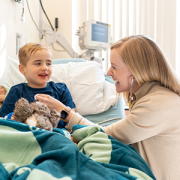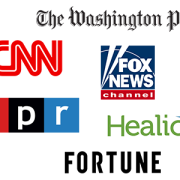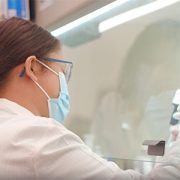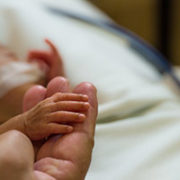What it means to be a designated treatment center for beta thalassemia

ZYNTEGLO® (betibeglogene autotemcel) is an FDA-approved gene therapy for transfusion-dependent beta thalassemia, which is an inherited blood disorder that causes the body to make less hemoglobin, resulting in anemia.
Children’s National Hospital is a designated qualified treatment center for Beta Thalassemia Gene Therapy. ZYNTEGLO® (betibeglogene autotemcel) is an FDA-approved gene therapy for transfusion-dependent beta thalassemia, which is an inherited blood disorder that causes the body to make less hemoglobin, resulting in anemia.
This unique therapy is made specifically for each child or adult, by adding functional copies of the beta-globin gene to their own blood stem cells. Most patients with beta thalassemia who have received a one-time ZYNTEGLO® treatment have been able to produce sufficient hemoglobin because of the treatment, freeing them from regular blood transfusions.
Evelio Perez, M.D., and Robert Nickel, M.D., lead the gene therapy program and discuss the importance of offering this gene therapy to patients with beta thalassemia.
Q: What has been the hold-up in this field and how does this work move the field forward?
A: Stem cell transplant using a donor’s cells (called allogeneic transplant) has been a curative treatment option for patients with beta thalassemia for many years. Unfortunately, many patients do not have a suitable donor. And, even for patients who have a donor, allogenic transplants have serious risks including a problem called graft versus host disease (GVHD) in which the new donor cells attack the patient’s body. Gene therapy like ZYNTEGLO® has no risk of GVHD because we use the patient’s own cells.
Q: How will this benefit patients? What excites you most about this advancement?
A: This treatment will give almost every patient with beta thalassemia the option of undergoing curative therapy. This is obviously exciting for patients because it means they no longer need to come to the hospital every 3-4 weeks for transfusions as well as take medications to treat the dangerous accumulation of iron in their body. It is also good for the health system because it will allow donated blood to go to other patients in need.
Q: How is Children’s National leading in this space?
A: This therapy really requires a multi-disciplinary team including members of the transplant, hematology, apheresis, stem cell lab and others! At Children’s National we have the experts on these teams and experience working together. As one of the largest sickle cell disease centers in the country, we are participating in research to hopefully help bring gene therapy to patients with sickle cell disease in the near future too.











